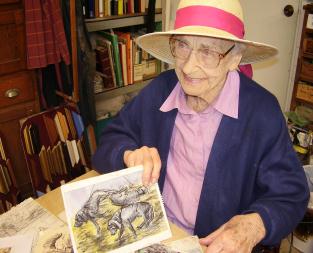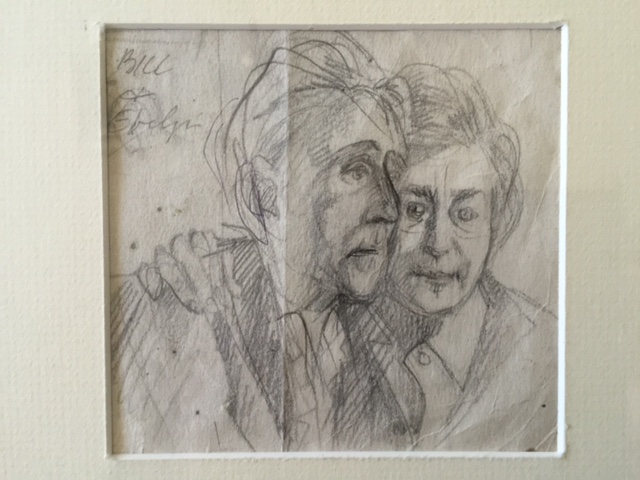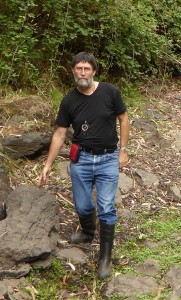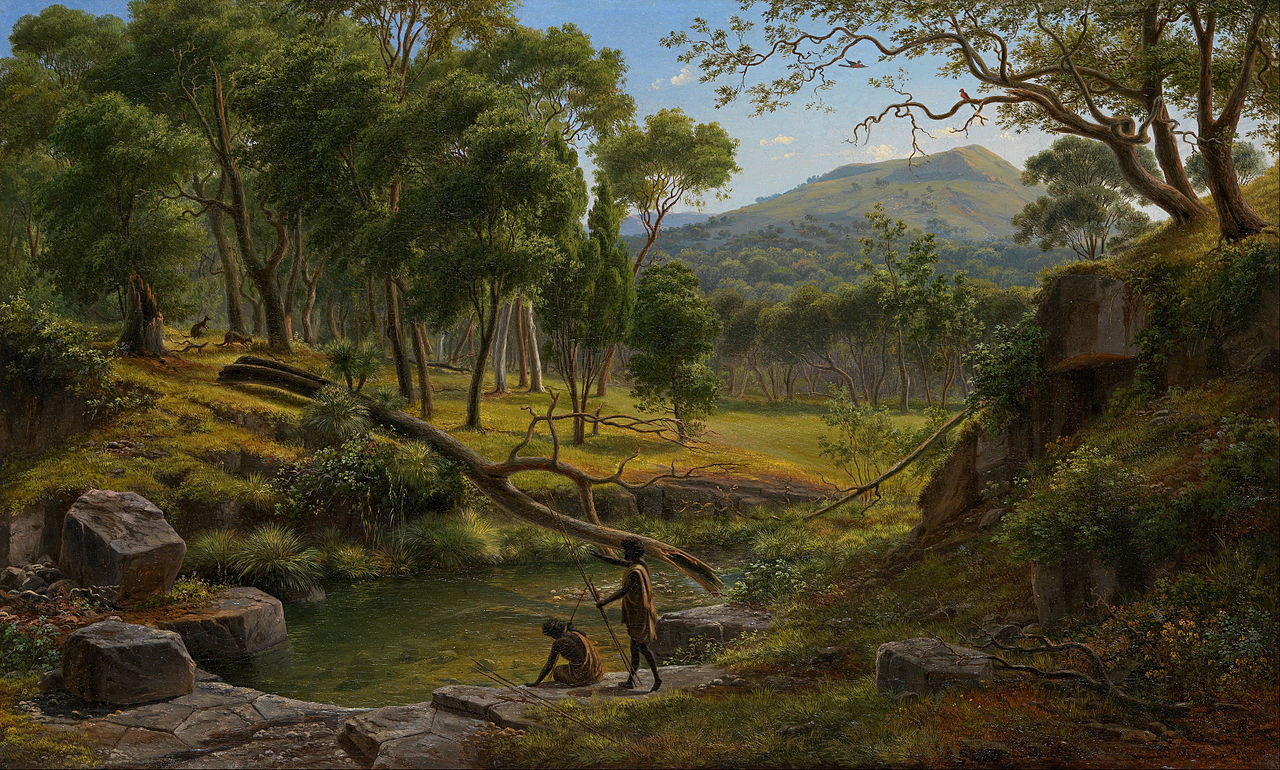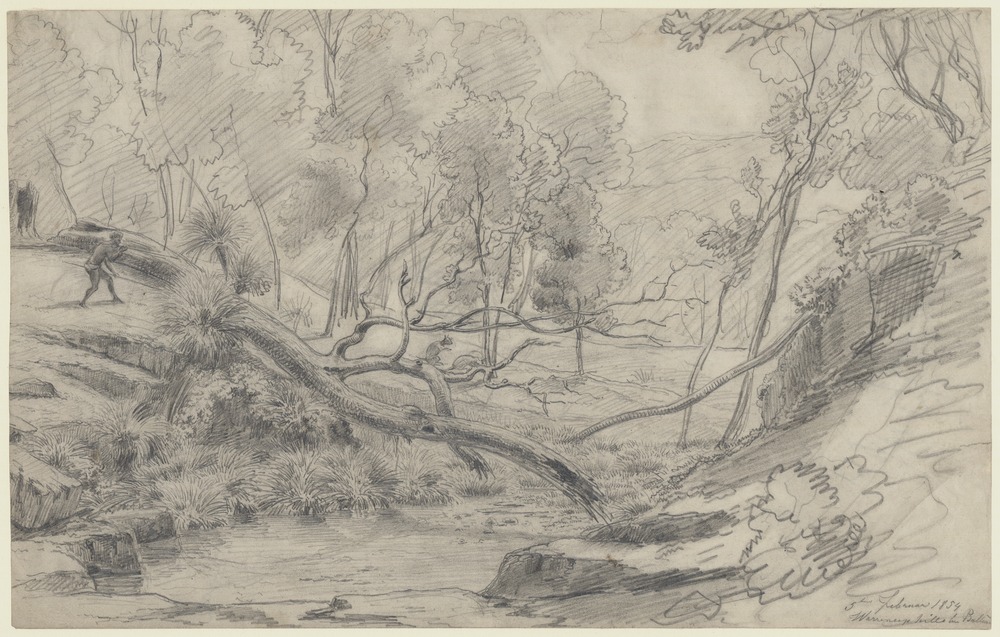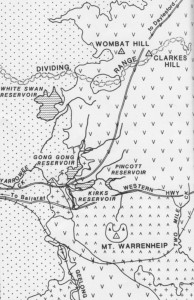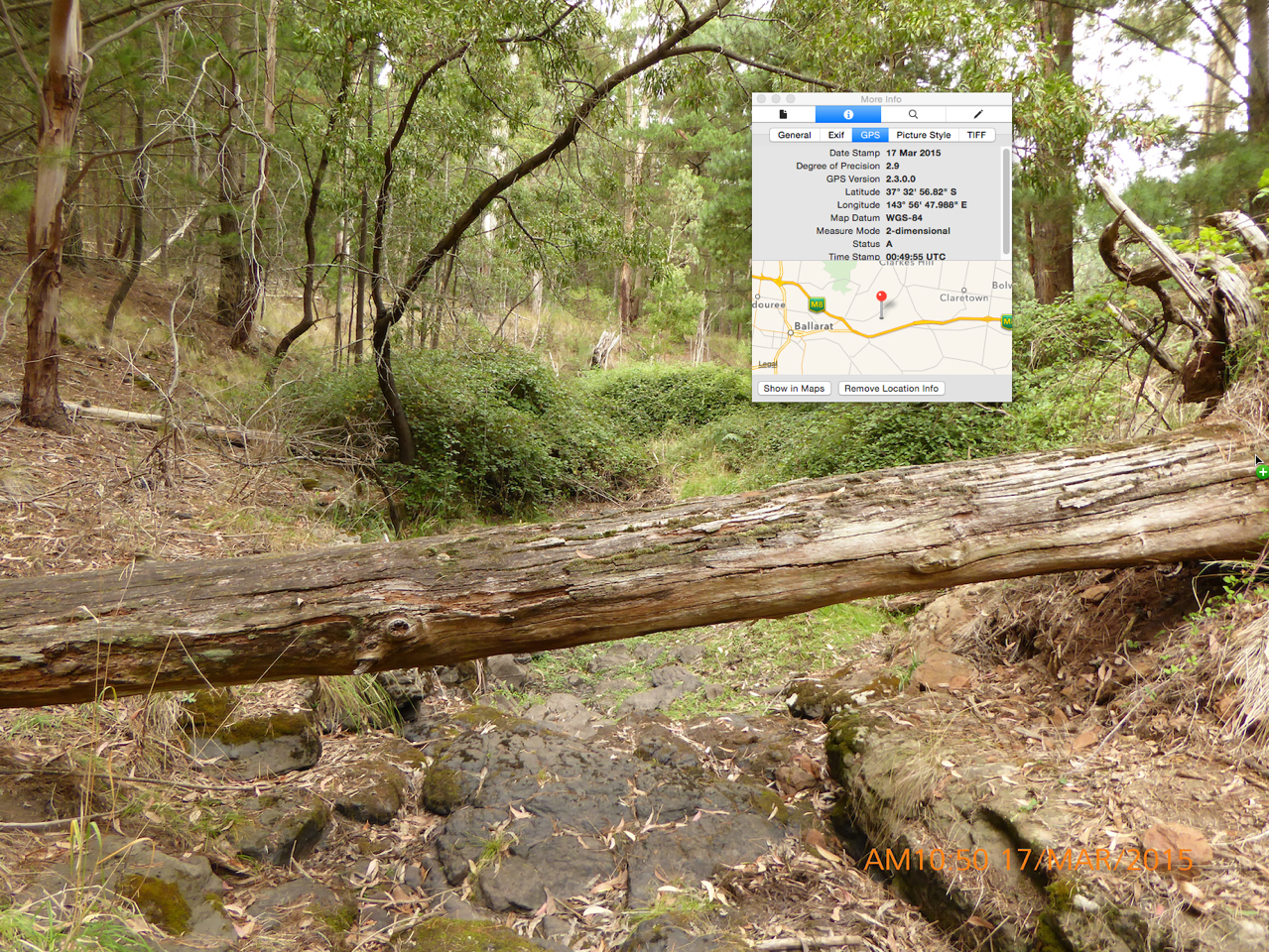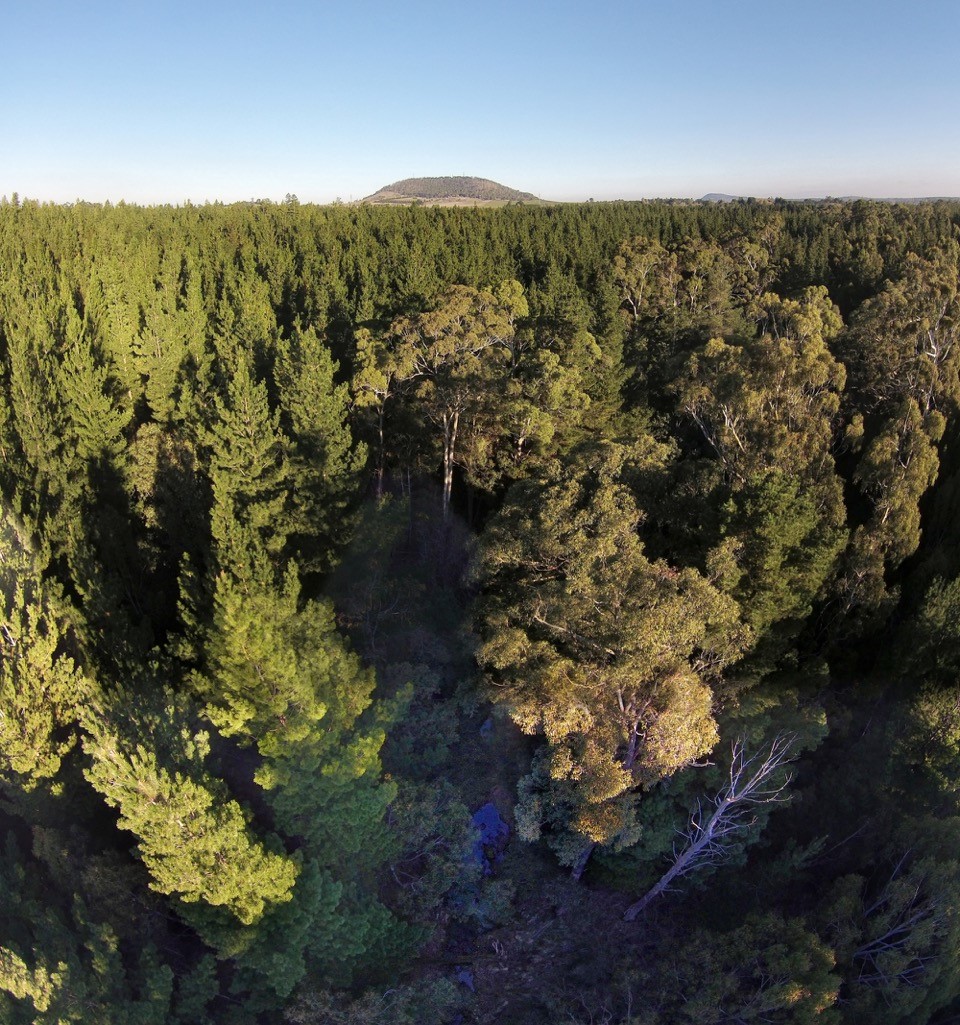Artists play a vital role in both documenting and commenting on the tangible and intangibles of place, and one of our favourites is the Burke and Wills Memorial Fountain (pictured below). We are currently featuring a new tool on the HUL portal called Artscapes through Time where you can fade between contemporary photographs and historic artworks in the same landscape, of which this beauty is one.
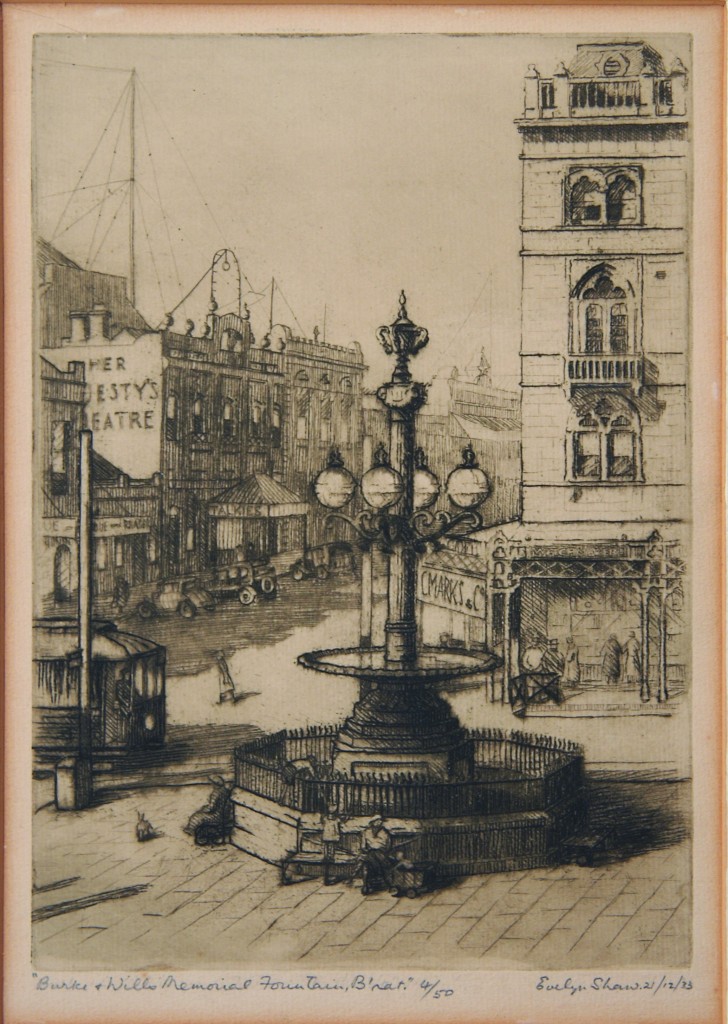
Who was the artist behind this work, capturing the movement and life of the city in 1933? Meet Artist, Peace Activist, & Community Advocate Evelyn Healy (nee Shaw) as told by Ballarat historian and Fed Uni lecturer Anne Beggs-Sunter:
Healy, Evelyn Myrtle
Born in 1912, Evelyn Shaw was the daughter of Edgar Shaw, bank manager, and Beatrice Towl of Ballarat, Victoria. She studied law in Melbourne, then art at Swinburne and the Ballarat School of Mines, completing her studies in 1935. In December 1935 she held her first solo exhibition at Booth’s Buildings in Sturt Street, which included the etching of the Burke and Mills Monument in Sturt Street, available for 15 shillings.
Although born into a wealthy family, grand-daughter of the Belfast-born manager of the great Phoenix Foundry, her social conscience was awakened by the contrast between her own privileged background and the many unemployed people in Ballarat during the Depression. She left Ballarat to pursue her artistic and activist career in Melbourne in 1936.
She became involved with the Communist Party of Australia (CPA), the peace movement and in designing anti-war banners for the Movement Against War and Fascism. In fact she played a key role in the rescue of the Eureka Flag from obscurity in 1938, when she asked her mother to obtain a detailed drawing of the flag so that artists in Melbourne could reproduce it as a banner for the Eureka Youth League. Subsequently the flag came to prominence as an emblem of left-wing political and trade union protest.
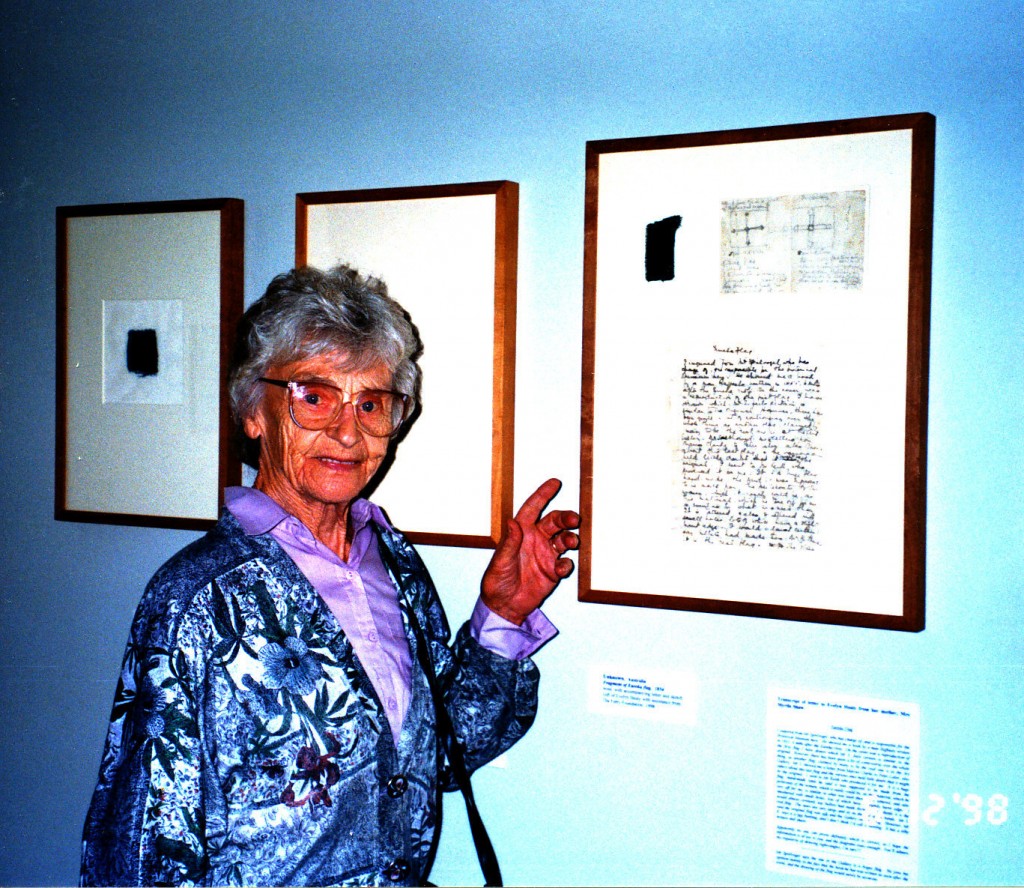
In 1941 she married Charles Walters, an Australian member of the International Brigade who fought in the Spanish Civil War, and moved to Sydney, where her only child Max was born in 1942. She worked in munitions factories, and became one of the first female members of the Amalgamated Engineering Union. She was involved in the fight for equal pay for women through membership of the Union’s Sydney Political Committee.
After the war she continued with factory work and some work as a commercial artist, and remained active as a Communist organiser and member of the peace movement. She was divorced in 1954.
In 1962 she married Bill Armstrong, and began working as a secondary art teacher. She was instrumental in the formation of the Cabramatta and Districts Art Society, and remained passionately committed to the peace movement, nuclear disarmament, and the United Nations Association, which made her a life member. In 1984 she represented Sydney Artists for Nuclear Disarmament on a fact finding visit to the then Soviet Union.
She married for a third time to labour activist Kevin Healy in 1986.
Into her eighties, she continued her active involvement in peace, environmental and refugee issues. She retained her faith in Communist principles to the end.
After the death of her husband in 2000, she retired to the Dalton Gardens Retirement Village in Gladesville, where she continued her involvement in art and social issues. She died at Gladesville in 2009.
By Anne Beggs-Sunter, 2015.
Published Resources
Healy, Evelyn, Artist of the Left; a personal experience 1930s – 1990s¸Sydney, the author, 1994.
Beggs-Sunter, Anne, ‘Something borrowed, something blue’, Overland, 160, Spring 2000, pp. 69-71
‘Art Show’, The Courier, Ballarat, 4 December 1935.
Thanks so much to Anne, and also to Julie McLaren and the Art Gallery of Ballarat who hold this work in their collection and have provided us images for use on the Artscapes page. With the nose of the tram making its way up Sturt St from the left hand side of Evelyn’s etching, the advertisement for ‘Talkies’ at Her Majesty’s Theatre in the background, and the people enjoying a seat by the fountain, Ballarat springs to life and invites us to consider all that has changed, and all that remains the same.
Thanks to the Fairfield City Art Society and Joe Briffa for this image of Evelyn and an additional artwork depicting her and her second husband Bill.


